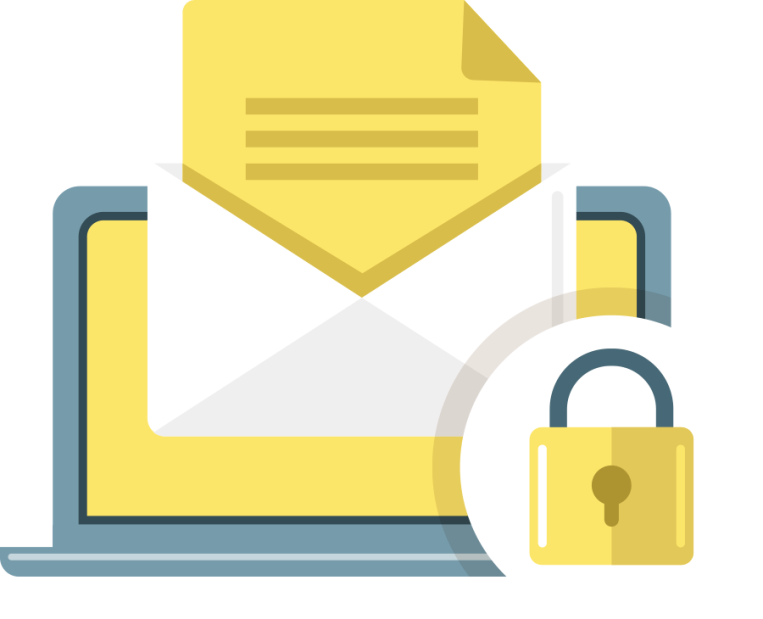
As a marketer, you rely on email to connect with your audience. The idea of implementing a new security protocol that could potentially block your emails can feel risky. However, DMARC isn’t a threat to your campaigns; it’s an essential tool for protecting your brand and ensuring your messages are trusted and delivered. Here is a simple, four-step roadmap for implementing DMARC without disrupting your marketing efforts.
Step 1: Start with Monitoring (p=none)
The first and most important step is to set your DMARC policy to p=none. This is a “monitoring-only” policy that tells mailbox providers to send you reports on all email using your domain, but to take no action on them.
This allows you to safely observe your email traffic and identify every service sending emails on your behalf—including your marketing platform, customer support software, or transactional email provider. Starting with this policy is a crucial first step for any business, especially for marketers who want to avoid inadvertently blocking legitimate campaigns. This initial stage is all about gathering information..
Step 2: Use Reports to Identify All Senders
Once your DMARC record is live, you will start receiving reports (XML files) that contain valuable information about your email flow. These reports will show you which of your emails are passing or failing SPF and DKIM authentication. This gives you a complete picture of all your sending services, helping you spot unauthorized use of your domain and, more importantly, ensure you don’t miss a legitimate service before moving on to the next step.
While the XML format of these reports can be complex and difficult to read manually, specialized DMARC reporting tools can parse this data into easy-to-understand dashboards. This is where you can clearly see the volume of your email traffic, which sources are passing authentication, and which are not. Analyzing these reports is key to moving forward confidently. To learn more about what to look for, you can check out our article on DMARC reports.
Step 3: Authenticate Your Marketing Platforms
Now that you’ve identified all your email-sending services, it’s time to set up SPF and DKIM for each of them. Most marketing platforms provide instructions on how to add records to your DNS. This is where you get all your legitimate email to pass the authentication checks required for DMARC.
DMARC relies on the successful alignment of either SPF or DKIM. Without this, even your legitimate emails will fail DMARC checks. For marketers, this step is particularly critical. If your email service provider (ESP) or marketing automation platform is not properly authenticated, your emails could be marked as spam or rejected entirely, regardless of your DMARC policy. Ensuring your ESP is correctly configured for DMARC alignment will greatly improve your email deliverability and sender reputation.
Step 4: Transition to a Stricter Policy
After you’ve confirmed that all your legitimate emails are passing both SPF and DKIM checks, you can begin the process of moving to a stricter DMARC policy. You will want to move incrementally, first to a quarantine policy and then, eventually, to a reject policy.
A quarantine policy p=quarantine tells the receiving server to place emails that fail DMARC authentication into the recipient’s spam folder. A reject policy p=reject, on the other hand, tells the receiving server to completely block these emails.
For a full breakdown of each policy and its impact, you can read our guide to DMARC policies. The transition should be done cautiously, often by increasing the percentage of emails to which the policy applies using the pct tag. For example, you might start with
p=quarantine; pct=10
and gradually increase the percentage over time. This phased approach allows you to catch any missed legitimate sources without the risk of accidentally blocking a large volume of emails.
DMARC’s Role in Modern Email Marketing
Implementing DMARC is no longer just a “nice-to-have” security measure; it has become a requirement. Major mailbox providers like Gmail and Yahoo! have already updated their email standards, mandating that bulk senders use DMARC with a p=none policy at a minimum. Failing to comply can result in your emails being marked as spam or blocked entirely.
This shift in email standards means that ignoring DMARC can have a direct and negative impact on your marketing campaigns. By following this roadmap, you can not only meet these new requirements but also proactively protect your brand from phishing and spoofing attacks. This helps to maintain trust with your audience and ensures that your messages reach their intended destination, ultimately benefiting your email marketing efforts and contributing to a stronger email sender reputation.
Need Help With Your DMARC Setup?
Learn more about 101domain’s Managed DMARC Services and let us do the heavy lifting for you. We handle policy setup, monitoring, and reporting so you can rest easy knowing your emails are secure.
